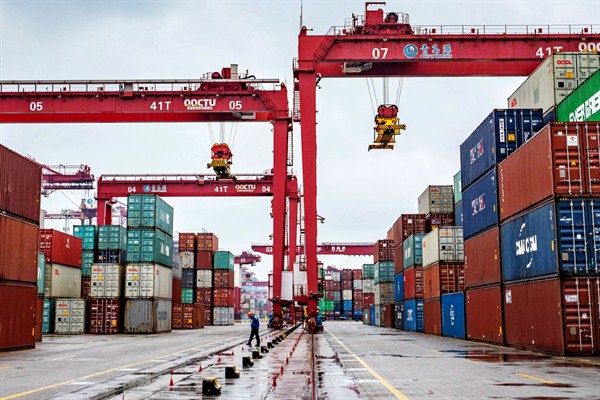Unless President Donald Trump decides to blow things up, a “phase one” trade deal between the United States and China will finally be signed this week. The agreement has remained somewhat up in the air because its text still hasn’t been released and Chinese officials have been unwilling to confirm key elements that the White House asserts are in it. Assuming that things do go as planned, though, this is far from the end of the story. Trump and his advisers insist there will be a “phase two” deal that addresses the big, structural issues in China’s economic policies, from the government’s support for state-owned enterprises to forced technology transfers. But in the meantime, which could be rather long, American businesses and consumers will continue to face higher costs because most of the tariffs imposed on China over the past 18 months will stay in place.
So why is this deal, so heavily promoted by Trump, doing so little to undo the effects of the trade war? And what does that mean for the American economy? A big reason for the limited tariff relief is that this agreement appears to be more about reelection politics in the U.S. than it is about China reforming its economic policies. Trump’s strongest talking point in the campaign is the relative strength of the American economy, so getting a cease-fire in the trade war that would avoid further escalation and reduce uncertainty was one big goal. In addition to that, there is a major weakness in selling his story of economic success: namely, declining incomes and increasing bankruptcies among American farmers—due in no small part to the trade war. More recent data also shows that the U.S. manufacturing sector is contracting, but this “phase one” deal does little to address that.
The core of the deal, at least from Trump’s perspective, is an apparent commitment from Beijing to increase its purchases of U.S. agricultural commodities. Trump has asserted that the Chinese will more than double the recent peak value of these imports to $50 billion. Other administration officials have said the official figure is closer to $40 billion. The Chinese have said only that they will increase purchases in line with demand and to the degree that quality products are available. Earlier this month, a Communist Party-linked newspaper pointed to the continuing discrepancies in official statements and suggested delaying the signing of the agreement to avoid misunderstandings and further conflict. We’ll see when we get the text.

